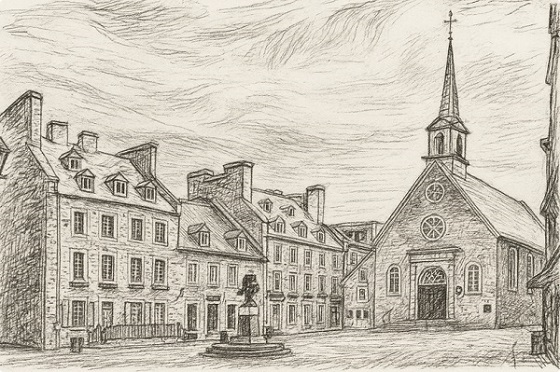Alberta
Orange Shirt Day – Acknowledging the Lasting Legacy of the Canadian Residential School System

The year 2020 marks the 24th anniversary of the final closure of the last operating Canadian residential school, located in Punnichy, Saskatchewan, in the year 1996.
Originally established in the late 1800’s, more than 130 residential schools operated across Canada for over 120 years. During this time, more than 150,000 First Nations, Metis and Inuit children were forcibly removed from their homes and placed into the schools (1).
Jointly operated by the Government of Canada and religious organizations across the nation, the residential school system was a violent and corrupt approach towards the total assimilation of Indigenous children and the ultimate erasure of Indigenous culture. The methods used by the schools to pursue this goal, as officially documented by the Canadian Truth and Reconciliation Commission (CTRC), were abhorrent acts of violence and humiliation against children that would raise a legacy of trauma and pain spanning generations.
The exact number of children who died during their time at the residential schools remains unclear, but is estimated to be greater than 6000 (2). The CRTC documents that many students succumbed to disease and malnourishment exacerbated by abysmal living conditions, while others died as a result of abuse and experimentation. Records show many children perished in fires when a number of schools burned down over the years, and others died by suicide, or while trying to escape (3).
“Children were abused, physically and sexually, and they died in numbers that would not have been tolerated in any school system in the country, or in the world.” – Summary of the Final Report of the Truth and Reconciliation Commission of Canada (4)
Since the final closure of the residential schools in 1996, steps towards national reconciliation – such as the launch of the Canadian Truth and Reconciliation Commission in 2008 – have been based in the acknowledgement and commemoration of the painful legacy of the schools across Canada. The documentation, preservation and dissemination of the residential school experience as told by the survivors is essential to understanding and accepting the implications of this dark and extensive period in Canadian history.
Among many ongoing discussions and dedications to the survivors and victims of the Canadian residential Schools, Orange Shirt Day is an annual recognition of the ongoing pursuit of reconciliation and affirmation in Canada.

Orange Shirt Day was born in Williams Lake, BC in May 2013 as a legacy of the St. Joseph Residential School Commemoration Project and Reunion. The project was founded by former student Esketemc (Alkali Lake) Chief Fred Robbins in an effort to bring together those whose lives had been negatively impacted by the schools. Specifically, “Events were designed to commemorate the residential school experience, to witness and honor the healing journey of the survivors and their families, and to commit to the ongoing process of reconciliation” (5).
Orange Shirt Day was founded as a result of the St. Joseph project, when former student and spokesperson for the Reunion group, Phyllis (Jack) Webstad, shared the experience of her first day at the residential school, “when her shiny new orange shirt, bought by her grandmother, was taken from her as a six-year old girl” (6).
September 30th was chosen as the annual Orange Shirt Day to coincide with the returning school year, and to commemorate the time of year in which children were originally taken from their homes to attend the residential schools.

On September 30, 2019, The National Centre for Truth and Reconciliation (NCTR) hosted a ceremony in honor of Orange Shirt Day at the Canadian Museum of History in Gatineau, Quebec. A list commemorating the names of 2,800 Indigenous children who died while attending the residential schools was presented on a 50-metre-long-ceremonial cloth. This ceremony represented an important first step, according to the NCTR, however, there is still a long way to go towards the proper recognition and memorialization of all who were lost to the schools.
Since 2013, Orange Shirt Day has continued to foster ongoing investigation and dialogue surrounding the history and lasting legacy of the residential school system within the Canadian historical landscape. It is a public call to listen, share, and remember those who suffered and now carry the lasting wounds of the government mandated Canadian residential school system, as well as those who never returned home at all.
For more stories, visit Todayville Calgary.
Alberta
From Underdog to Top Broodmare

WATCH From Underdog to Top Broodmare (video)
Executive Producers Jeff Robillard (Horse Racing Alberta) and Mike Little (Shinelight Entertainment)
What began as an underdog story became a legacy of excellence. Crackers Hot Shot didn’t just race — she paved the way for future generations, and in doing so became one of the most influential producers the province has known.
The extraordinary journey of Crackers Hot Shot — once overlooked, now revered — stands as one of Alberta’s finest success stories in harness racing and breeding.
Born in humble circumstances and initially considered rough around the edges, Crackers Hot Shot overcame long odds to carve out a career that would forever impact the province’s racing industry. From a “wild, unhandled filly” to Alberta’s “Horse of the Year” in 2013, to producing foals who carry her spirit and fortitude into future generations.
Her influence ripples through Alberta’s racing and breeding landscape: from how young stock are prepared, to the aspirations of local breeders who now look to “the mare that did it” as proof that world-class talent can emerge from Alberta’s paddocks.
“Crackers Hot Shot, she had a tough start. She wasn’t much to look at when we first got her” — Rod Starkewski
“Crackers Hot Shot was left on her own – Carl Archibald heard us talking, he said ‘I’ll go get her – I live by there’. I think it took him 3 days to dig her out of the snow. She was completely wild – then we just started working on her. She really needed some humans to work with her – and get to know that people are not scary.” — Jackie Starkewski
“Crackers Hot Shot would be one of the top broodmares in Albeta percentage wise if nothing else. Her foals hit the track – they’re looking for the winners circle every time.” — Connie Kolthammer
Visit thehorses.com to learn more about Alberta’s Horse Racing industry.
Alberta
Province orders School Boards to gather data on class sizes and complexity by Nov 24

Better data, better outcomes for Alberta students |
To help schools address classroom complexity, Alberta’s government will begin collecting annual data on class size and composition.
Over the past three years, Alberta has welcomed more than 80,000 new students. With this unprecedented growth, classroom complexity and class sizes are among the biggest issues facing schools and teachers across the province.
To meet this challenge head on, Alberta’s government will work with school boards to gather yearly data on class sizes and composition. This information will be used to better understand staffing, student needs and classroom complexity. School boards will be required to submit data on Alberta classrooms by Nov. 24, and by January, this data will be made publicly available and will then be released annually.
Data collected on classroom complexity will help the province understand and address issues in schools, including class sizes, and support strategic investments in classrooms. Over the next three years, school boards will be provided with funding to hire 3,000 teachers and 1,500 new education assistants to support students with complex needs.
“We are ready to work with school boards and teachers to address classroom complexity and class sizes. We have heard them loud and clear and we are taking bold action to address these issues.”
Alberta’s government is establishing a Class Size and Complexity Task Force to begin work immediately on identifying solutions to the challenges facing Alberta classrooms. Alongside new annual data collection, the task force will ensure every student gets the attention and support they need to succeed. Details about the task force will be shared in the coming weeks.
“This data will provide essential insight into classroom realities, guiding evidence-based decisions and advocating for sustainable funding to address complexity, ensuring every student and educator in Alberta has the support to thrive.”
Quick facts
To inform decisions on addressing classroom complexity, data will be collected on total numbers of:
- all staff, per school, including roles
- substitute teachers
- district staff, listed by job title
- students, per classroom, per school
- severe, mild/moderate, and gifted/talented students, per classroom, per school
- English as an additional language (EAL) students, per classroom, per school
- refugee students, per classroom, per school
- First Nations, Métis and Inuit students, per classroom, per school
- Individualized Program Plans, per classroom, per school
- students waitlisted for assessment, per classroom, per school
- incidents of aggression and violence
- $55 million was provided in Budget 2025 to address classroom complexity.
- 8.6 billion is being invested to build and renovate more than 130 schools across the province.
- Budget 2025 is investing $1.6 billion in learning support funding to help meet students’ specialized learning needs.
- Budget 2025 is investing $1.1 billion to hire more than 4,000 teachers and educational staff.
-

 Alberta17 hours ago
Alberta17 hours agoFrom Underdog to Top Broodmare
-

 International1 day ago
International1 day agoPrince Andrew banished from the British monarchy
-

 Business1 day ago
Business1 day ago“We have a deal”: Trump, Xi strike breakthrough on trade and fentanyl
-

 Alberta1 day ago
Alberta1 day agoProvince orders School Boards to gather data on class sizes and complexity by Nov 24
-

 Business2 days ago
Business2 days agoCanada’s attack on religious charities makes no fiscal sense
-

 Bruce Dowbiggin2 days ago
Bruce Dowbiggin2 days agoGet Ready: Your House May Not Be Yours Much Longer
-

 Crime1 day ago
Crime1 day agoCanada Seizes 4,300 Litres of Chinese Drug Precursors Amid Trump’s Tariff Pressure Over Fentanyl Flows
-

 National1 day ago
National1 day agoWatchdog Presses Ottawa to Release Hidden Lobbying Rulings









